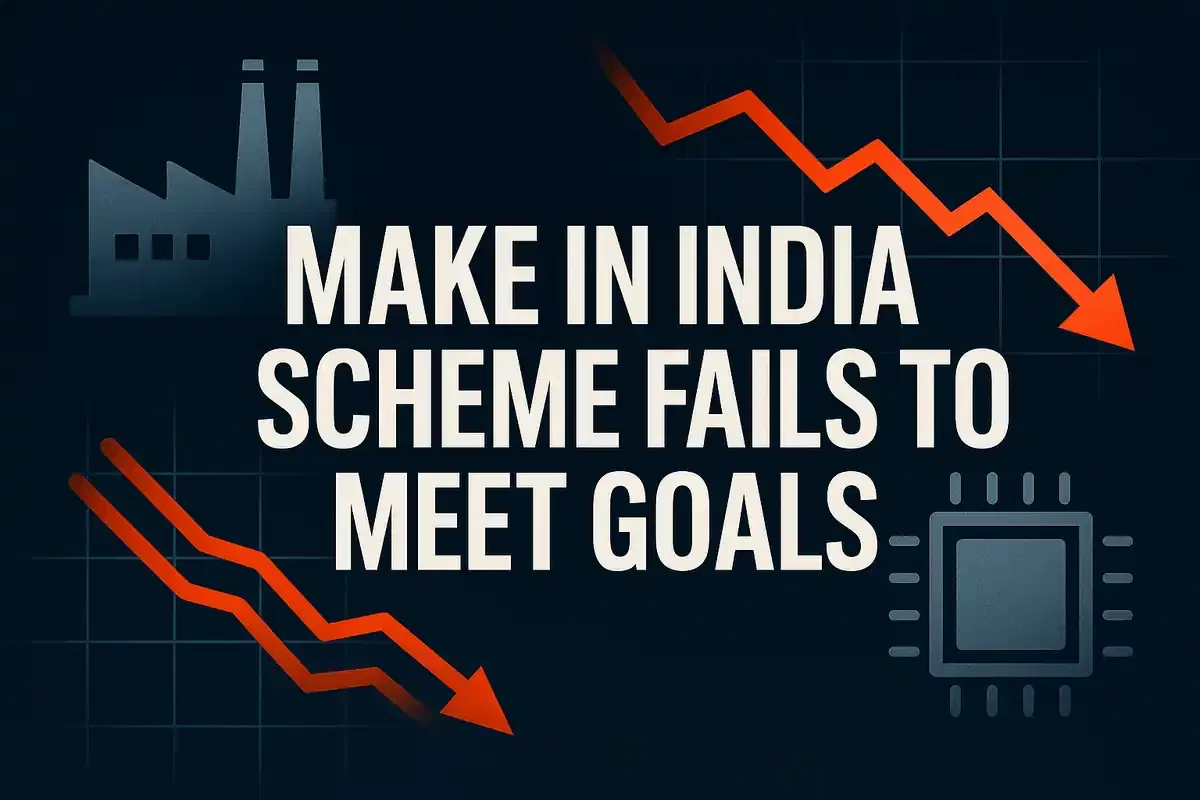India's 'Make in India' and PLI Schemes Face Hurdles: Low Value Addition, Funding Gaps Highlighted
Industrial Goods/Services
|
29th October 2025, 1:04 AM

▶
Short Description :
Detailed Coverage :
The 'Make in India' program, launched in 2014 to boost manufacturing, along with subsequent initiatives like the Production Linked Incentive (PLI) Scheme, Design Linked Incentive (DLI) Scheme, and India Semiconductor Mission (ISM), aimed to transform India into a global manufacturing hub and foster self-reliance under the Atmanirbhar Bharat package. However, the review indicates these schemes have fallen short of their ambitious goals.
While the PLI scheme attracted global players like Apple's suppliers, leading to increased smartphone exports, it resulted in low value addition and minimal technology transfer, leaving India primarily as an assembly hub. High-value components are still imported, mainly from China, Vietnam, and South Korea. The incentives have largely benefited a few large mobile manufacturers, with other targeted sectors showing limited progress and significant underutilization of funds. As of July 2025, less than 11% of the total PLI outlay had been disbursed, and job creation fell short of targets.
The DLI scheme's impact has been minimal, partly due to its small scale, and the ISM's outlay also pales in comparison to investments by countries like the US and China.
Structural issues identified include weak institutional support, a lack of coordinated pathways for scaling and commercialization, skill gaps in advanced design, and an inability to overcome fundamental constraints like land, labor, and logistics. India's R&D expenditure also remains significantly lower than that of global peers.
Impact: The failure to achieve the intended manufacturing goals, enhance value addition, and foster technological self-sufficiency could negatively impact India's economic growth trajectory, export potential, and overall competitiveness in the global market. It may also affect investor confidence in similar large-scale industrial initiatives. Rating: 7/10.
Difficult Terms: Make in India programme: A government initiative launched in 2014 to encourage domestic and foreign companies to manufacture goods in India. Production Linked Incentive (PLI) Scheme: A scheme that offers financial incentives to companies based on their incremental sales of manufactured goods. Design Linked Incentive (DLI) Scheme: A scheme designed to promote indigenous product development and semiconductor design through R&D and financial incentives. Atmanirbhar Bharat package: A comprehensive initiative by the Indian government aimed at making India self-reliant in various sectors. India Semiconductor Mission (ISM): A government mission established to foster the development of a comprehensive semiconductor ecosystem in India. Value addition: The increase in the worth of a product during the manufacturing process, from raw materials to finished goods. Technology transfer: The process of sharing technological knowledge, skills, and intellectual property between different entities or countries. MSMEs: Micro, Small, and Medium Enterprises, which are small to medium-sized businesses. PM Gati Shakti: A master plan for multi-modal connectivity aimed at improving logistics and infrastructure. National Logistics Policy: A policy focused on improving the efficiency and cost-effectiveness of India's logistics sector.